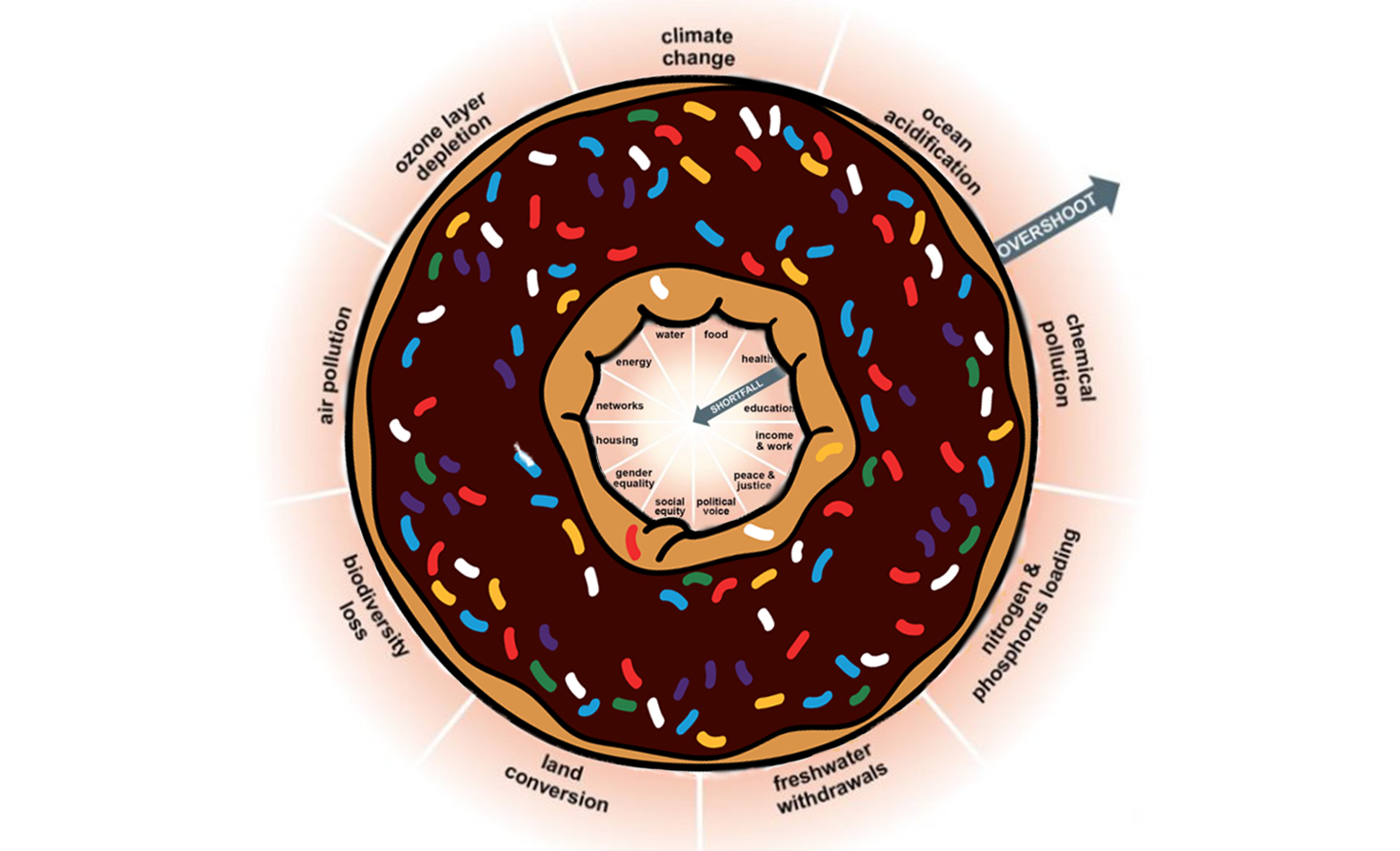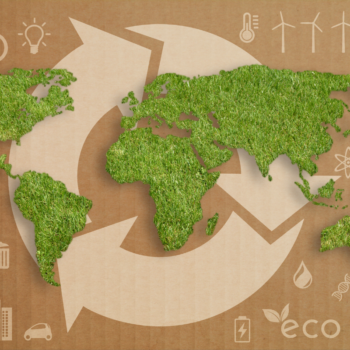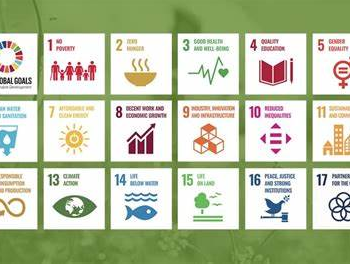It seems Amsterdam has caught a sweet tooth for a doughnut model, and according to Oxford economist Kate Raworth, the rest of the world should soon follow suit. No, Raworth isn’t talking about the sweet, doughy treat we hate to love at our weekly office meetings. Rather, she is pointing to her revolutionary economic model which embraces social and ecological perspectives, both locally and globally, to spark a more sustainable future.
Busy? Try the speed read.
The scoop Amsterdam has adopted the Doughnut Model as a tool for transformative action in the city’s post COVID-19 economy
What to know Kate Raworth’s Doughnut Model combines social and ecological perspectives to achieve sustainable economic growth beneficial for both society and the planet
Dig deeper → 3 min
What is the Doughnut Model?
At the heart of the Doughnut Model, it addresses a pivotal 21st century question: how can a city host thriving people in a thriving place, while fostering the wellbeing of all individuals and the health of the whole planet? As a starting point, the model proposes a social foundation and ecological ceiling that applies to the entire world.
The inner ring of the doughnut outlines the minimum society must do to meet their daily needs based on the United Nations Sustainable Development Goals (SDGs) such as ensuring food security, water access, education, and healthcare. The outer ring of the doughnut represents the ecological barriers we must not overshoot to avoid detrimental impacts on the environment.
Thus, the sweet spot lies between these two rings, where both society’s needs and the planet’s needs are met. Here, in all of the doughnut’s sweet glory, you and I live in harmony with the planet.
Amsterdam and the Doughnut
Unfortunately, applying the doughnut model would be easier said than done. Economists found that the model requires significant down-scaling to take the doughnut from a theoretical concept to an actionable item. Not only must economists look at the model through the lens of each specific region, they must also include the perspectives of local stakeholders such as governments, small-medium sized enterprises (SMEs), and everyday citizens. Only after significant collaboration and adjustments would the doughnut model work in the “real world.”
Despite the plain difficulty of implementing the Doughnut Model, we now know that it can be done. The COVID-19 crisis has prompted Amsterdam to transform its entire economic approach to ensure a more sustainable way forward. According to Raworth, having the first real-world application of the doughnut in Amsterdam was a no-brainer. After all, the city has already placed the doughnut at the center of its long-term vision to “be a thriving, regenerative, and inclusive city for all citizens, while respecting the planetary boundaries.”
Amsterdam also has the necessary bandwidth to work on down-scaling the doughnut via the Thriving Cities Initiative, a collaboration between C40, Circle Economy, and the Doughnut Economics Action Lab which works with cities to pursue systemic transformation. The city also hosts a dynamic network of changemakers, globally recognized for the “Amsterdam Approach” to collaborative innovation. As part of the Amsterdam Donut Coalition, the city has secured a highly collaborative network of over 30 organizations and changemakers who apply the doughnut in their own work.
All of these factors have positioned Amsterdam as a pioneer and global sustainable leader that can positively inspire cities around the globe to embark on their own transformational journeys with the almighty doughnut.
Where will the Doughnut appear next?
According to a March 2020 report by the Doughnut Economics Action Lab, 55% of the world’s population lives in cities, accounting for over 60% of global energy use and more than 70% of global greenhouse gas emissions. Moreover, researchers from the Norwegian University of Science and Technology found that the 100 highest-emitting urban areas account for 18% of the global carbon footprint, making cities both powerful agents for change and powerful weapons of ecological destruction.
Interestingly, researchers also noted a correlation between a city’s carbon footprint and disposable income; the higher average disposable income of a particular region, the greater its carbon footprint.
All things considered, this indicator makes perfect sense. After all, the more available funds you have, the more likely you are to feed into the consumerist culture by purchasing goods, flying to your favorite vacay destination, or driving fancy cars. In fact, this consumerism trend in urban areas is exactly why cities foster concentrated economic growth. One estimate suggests 600 urban centers generate 60% of global GDP.
This circles back to the pitfall of 20th century economic theory, in which feeding global GDP growth became the ultimate goal. As we continued to drive GDP upward, however, we simultaneously drove the planet to its breaking point, fueling social inequalities and ecological destruction.
We need to think Doughnut
For over a century now, we have been stuck in an unbreakable cycle — make, use, dispose — which has made us spend, consume, and pollute in excess. Now, we face threats of climate change, loss in biodiversity, land conversion, and lack of resources. Needless to say, it is time for a new and innovative way of thinking to break this vicious cycle,which is where the doughnut comes into play.
The Doughnut Model is a powerful catalyst for the shift from a linear economy to a circular economy. Circular flows of material generate many benefits such as job creation, operational savings, lower carbon emissions, and less waste. More importantly, the circular model promises a more sustainable and efficient financial, social, and ecological future.
Over the past eight years, several initiatives have explored how to downscale the doughnut for proper implementation in China, South Africa, Wales and the United Kingdom. However, Amsterdam is the first real success story we have seen since the introduction of the Doughnut Model in 2012.
There are several key takeaways from Amsterdam’s recent success with the Doughnut Model. For one, the doughnut must have a place in a city’s long-term mission and vision to ensure strategic and economic alignment with the region’s future goals. A network of changemakers and forward-thinkers undergirds the model’s success, as well as a highly collaborative environment for city systems to thrive. Most importantly, however, citizens must maintain a conscious desire and effort to lead a more socially and environmentally mindful lifestyle that ensures a more promising future.
So, it seems that there may be a silver-lining for cities amidst the COVID-19 crisis after all — delivered in the form of a doughnut.













No Comments